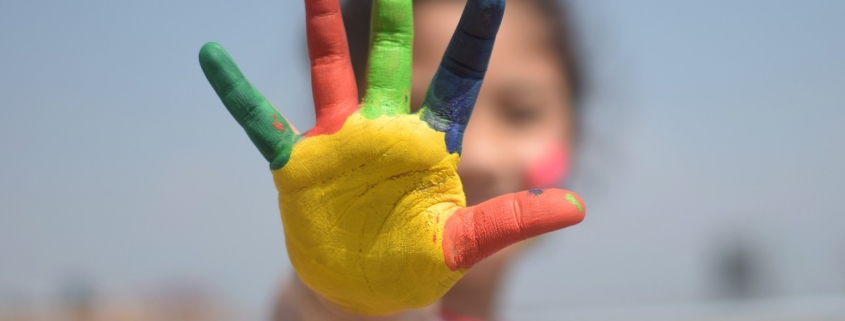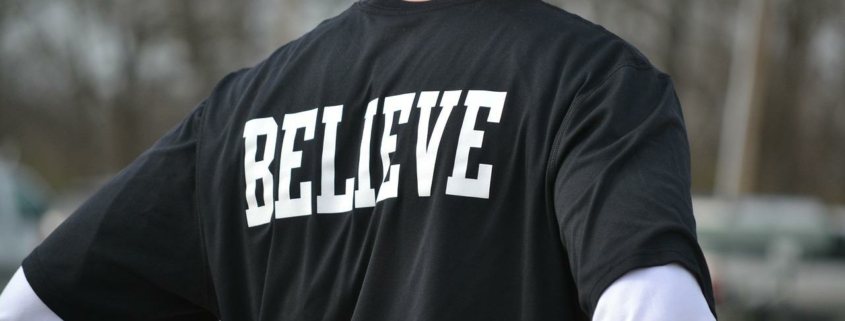What is your morning routine? Why does it matter? For some, the morning routine begins with hitting the snooze button for an extra 10 minutes of sleep. For others, it begins a predictable roller coaster with a high stress march and ending with a run out the front door.
If your morning routine is a bit sketchy, you’ll be delighted to learn you have more to do with how your day turns out than you previously thought. Yes, there will often be surprises. But what if you could ‘tilt the odds’ or ‘bend reality’ more towards the day you’d like (vs. same ol’ same ol’)? Interested in how to foster an amazing day, every day? If so, this issue is for you.
Background
Here is this month’s insight. Your brain can be altered, trained, and sculpted to help you thrive daily. And it begins with the first 30 minutes of your day. Some educators start off their day cranky, grumpy, and tired (“I hate Mondays.”). Others start off every day by creating a morning routine that brings the day along the way they want it to be… every day. I am inviting you to delve into a daily, powerful way of influencing yourself, your family, and your students.
The Research
Maybe before the pandemic you thought of optimizing your health as an ‘extra’ in your life. Hopefully, you have developed a new awareness of how important your health is because of these last 20 months. The number of deaths from COVID only has been about 6% of the total cases (approx. 25,000). Among those who were listed as “died from COVID,” the average number of ‘underlying conditions’ was 2.9 (www.cdc.gov/nchs/data/health_policy/covid19-comorbidity-expanded-12092020-508.pdf). Remember, the list of underlying conditions is long and you want to stay off those lists.
Why do underlying conditions matter? Chronic health issues, such as distress, lower your immune system capacity (Dhabhar, 2014). Your profession demands robust health and vitality. That means daily efforts to maintain healthy habits. In fact, from interviews with highly successful people from all occupations, geography, and genders, the results are clear. Most high-performing people have a predictable routine (a string of micro-habits) that are done 6-7 days a week (Ferriss, 2016). If you would like to fuel your day better with more energy, a clear path, and optimism, this issue is for you.
1. First goal: Awaken your body with hydration
Hydration with water. Assuming it’s your first liquid of the day (and not influenced by sickness, sweating, or diarrhea/vomiting), you need water, and ideally, electrolytes. If your budget says water only, start your day with a glass of filtered water. Forget the common advice for eight glasses a day; there’s no evidence for that (Valtin, 2002). Everyone’s body is different.
The optimal composition of your morning fluid-replacement (aside from water) depends upon your situational needs (Baker & Jeukendrup, 2014). It’s likely, you will need more than just water. Years ago, electrolytes were only given to hospital patients or top athletes (Shirreffs & Sawka, 2011). Today, we know better. Electrolytes are so important to your organ health that the donated organ gets bathed in electrolytes before being given to the recipient (Chew, Macdonald & Dhital, 2019). The seven critical electrolytes are sodium, potassium, chloride, magnesium, bicarbonate, phosphate, and calcium.
Why take electrolytes? The body uses electrolytes to help foster brain communications, essentially powering our nervous system. When electrolyte levels are balanced, your body’s osmosis process prevents the cells from becoming too full of water or losing too much water. You also need electrolytes to support the muscle fibers to work to allow the muscles to shorten and contract. And, electrolytes regulate the body’s internal pH to avoid becoming too acidic or alkaline (regulating bodily functions). Athletes have high-performance demands and you do, too (Rowlands, Kopetschny & Badenhorst, 2021).
Maybe by now you might well consider yourself as an “educational athlete.” It’s time you be honest with yourself; are you one who endures physical, emotional, and cognitive stressors daily? If so, taking electrolytes has become a standard practice for high performers (Sawka, 2007). While you can get some electrolytes from food, not all are easily obtained. So, if you can afford it (about a dollar a day), consider adding electrolytes to your daily routine. More on this later…
2. Second Goal: Wake the body up with breath and/or movement
Breath. A classroom teacher may get surprised or nearly traumatized by a violent student outburst. But instead of a knee-jerk response that escalates the situation, certain teachers can instantly trigger her or his own practiced, slowed breathing rhythm. The slower breathing supports the cardiovascular, endocrine, autonomic, and central brain systems. In just seconds the teacher’s breathing nudges the activation of the body’s more calming parasympathetic system and a whole-body relaxation sets in. The situation becomes resolved in seconds.
This process of voluntary slow deep breathing functionally resets the autonomic nervous system. That leads to decreased heart rate and blood pressure, as well as increased alertness and reinvigoration of the body (Jerath, Edry, Barnes & Jerath, 2006). Slow, deep breathing can also reduce pain sensations. That may mean taking fewer or lower doses of common pain relievers (less of them means better kidney function). Finally, doing daily breath practice can have lasting positive effects on your emotional, cognitive, and physiological regulation (Boyadzhieva & Kayhan, 2021). The teacher mentioned above was wise to learn a breathing practice. More on it later…
Movement. What type of movement you do is up to your health requirements. Avoid making time the determining factor; we all have 24 hours in a day. Some fitness experts have a morning routine starting with rapid breathing practice and just 3-5 minutes of cardio and that’s it. Why? Their goal might be to simply activate muscles, boost blood flow and reduce stiffness. Others do a longer cardio routine. The best routine is the one you follow at least five days a week.
There is a great deal of research on the question, “Which is better, morning or evening exercise?” A large meta-study (70 research articles) reveals that there are different benefits at different times of the day (Seo, et al., 2013). Morning exercise can enhance the parasympathetic activity (reduces heart rate variability). This means you’re less likely to be as stressed in the morning. Evening exercise increased heart rate variability and can improve nocturnal sleep. (Yamanaka, et al., 2015). Yet consistent morning exercise can facilitate exercise adherence and improve weight management (Schumacher et al., 2020). So, exercise WHEN you can; there is no perfect time to exercise.
3. Third Goal: Fuel your mind and heart
What your mind and heart need. Your brain gets countless sources of input daily. Most of what goes into your brain’s inbox is ‘junk mail.’ These might be snippets of complaints, silly stories, gloom, doom, and sarcasm. Your brain will absorb, reuse, and share garbage if you allow it to. The ‘junk mail’ snippets are one of many ways that contribute to what appears to be a chaotic, complex, and divisive world.
Never allow the ‘world’ out there to drive your bus. Take charge. Learn to sculpt your mind and feelings. Every day, your brain is processing the world and creating stories about it (Cohn-Sheehy, 2021). Your stories become your identity and then they influence your habits. Your brain is wired to listen to, create, and tell stories (Coe, Aiken & Palmer, 2006). Every human creates their own stories (or brief narratives) with a chapter title such as, “Life is good” or “Life’s a Bear.”
It is your curiosity and need for the emotions in stories that compel you to read or watch the teaser “stories.” (Green, Chatham & Sestir, 2012). But your brain is your world and since you take it (your brain) everywhere you go, take charge of it. You’ll want to orchestrate and source uplifting stories every day. Over time, you will re-wire your brain so it can feed you better instead of poison you. You’ll learn how to do it in just a moment.
ACTION STEPS:
Here’s what you can do to build an amazing morning routine. Since safety is your highest priority, always check with a qualified health practitioner when considering changes in nutrition, sleep, or movement activities.
Remember, while the core needs for your brain, heart, and body are the same for all of us, they may get fulfilled in your own personal ways.
1. Here’s how to awaken your body with hydration.
Hydration. Drink a glass of clear, filtered water shortly after getting up. If it fits in your budget, drink the electrolytes that your body needs. There are many companies that sell electrolyte packets to add to your water. Your optimal fluid-replacement beverage is one that is customized for your needs and budget. Each one of the popular electrolyte packets available for sale (Pedialyte Sport, LMNT, DayLyte Electrolyte, Ultima Replenisher Electrolyte or Liquid I.V. Hydration Multiplier) has a different ingredient list.
I avoid the ones that add sugar to the product. I have been on board with morning electrolytes for years. I add a small packet of sodium (1000mg), magnesium (60 mg.) and potassium (200 mg.) to my water. Most importantly, it’s amazing to start the day with a body/brain recharge and have a clear head and energized body within minutes. If these are out of your budget, get your electrolytes from food or take mineral supplements for the top three (sodium, potassium, and magnesium). One handy option I like is pure coconut water (not the sweetened coconut juice) because it is high in electrolytes. I start every day with hydration and electrolytes.
2. Here’s how to awaken with breath and movement.
Next, you might add your own breathing, movement, and stretching routine.
Breath. Begin with simple, yet powerful breaths. Use your smartphone as a timer to practice breathing at a slow rhythm. Inhale, then engage an exhale that is longer than your inhale (2-1 or even 3-1 ratio). Do 6 breaths per minute. That works out to about a 3-5 sec. inhale and 7-9 sec. exhale. Start with doing just one minute. As you become more comfortable doing it, extend your slow breath practice time for 3 to 5 minutes. Over time, add your movement and breathing together to get a “two for one.”
Movement. Movement also raises oxygen levels and loosens your muscles. To get started, make the process affordable, simple, and fun. Just a personal preference for me is to stretch in the morning and do rigorous exercise in the late afternoon. Is a yoga mat a necessity? No; but it does help quite a bit (physically and psychologically). Just sitting on a mat reminds me to practice mindfulness; it’s now my own brain’s association that links stretching with mindfulness. You can get simple yoga tools from sites such as http://www.doyogawithme.com/. My suggestion is to do 5-20 minutes every morning (using breathing, stretching, or cardio) to awaken your body.
In my own routine, I alternate days of resistance training and swim time during the afternoon. Walking is also a great cardio exercise. Take a walk with a friend, your dog, or with your kids. The core habit is to work your body every other day so you get a day off for muscle repair. For budget-level resistance training, simply purchase products like Resistance Loop Exercise Bands on Amazon (about $12-15). Remember, you’ll still need to do the resistance work; no one can do your training for you.
Start any new movement program in small increments (30” to 3 minutes) and be sure to get permission of your health professional. The habit is more important than the time you spend on it. Once you get in the habit of doing it, you can add more time or quantity of sets.
3. Here’s how to manage what your mind, heart, and emotions need.
Mind. First, before I read any news or check emails, I start shaping my own brain. I have written out a “Daily Story.” The story is about 200 words. It includes my short term micro-goals (e.g. finish up a PowerPoint, work on a book chapter, send a gift, etc.). I have also embedded my character affirmations, as well as my daily habits (e.g. “I do stretching and workouts daily.”). I edit this weekly. It is my “living story.” Tiny updates keep it relevant.
Next, I check in with what’s going on in the world. To reduce bias, I read seven different news sources over a week’s time (never all at once) since each source filters the news very differently than the others. My daily news read is always ten minutes or less. How? I also subscribe to the 1440 Daily Digest (access at: https://join1440.com). It is the quickest, cut-to-the-chase, least biased new source I have found. I read it in 3-5 minutes.
Heart and Emotions. Finally, you may want to connect with others; that’s your heart. You can reward the emotional brain after the core tools of hydration, electrolytes, stretching, and news of the day. Only at the end of my routine do I give myself from 5-20 minutes to read and reply to any online favorites. Maybe you’ll be checking media sources such as Facebook, email, Instagram, or LinkedIn. Once I am done, I am ready to take on the day.
My entire “wake-up” routine is usually 60 minutes. My first half-hour is hydration, stretching, and mindfulness. I feel wide awake, up to speed, and connected. I have affirmed my identity, character, and goals. I only know the news worth reading. I am calm, but focused. By now, it may be time for a slow cup of organic, black coffee (or green tea or black tea) outside with my wife, Diane.
This morning routine is priceless for me and it might work for you with your personal modifications. Choose to play the ‘long game.’ With that mindset, you do things for your long-term well-being (heart, mind, and body) and do your daily work with energy, joy, and passion.
That’s it; it’s closing time. Now for my biggest fear. Maybe you still use the ‘time bias.’ Many will read this newsletter and then respond with, “I’m just too busy; I’ve got no time for those changes to help me and my students soar like eagles.” If you feel that way, I am sorry; I have failed you. I failed to activate your choice of playing the ‘long game.’ Biases are shortcuts to save time and are often about the ‘short game.’
You see, life goes by so fast that many would say, “Live in the moment, smell the roses, life is short.” And they’re right. Life is about savoring the smell of the flowers, eating a great meal and enjoying hugs from friends and family.
But most everything in life that’s worth having over a lifetime also requires the ‘the long game.’ At school, it includes building relationships and fostering cognitive capacity. At home, the list includes maintaining relationships, appreciating the daily blessings and saving for retirement. Choose right now; what have you decided on… long or short? Then begin… right now.
CITATIONS
Baker Ls, Jeukendrup AE. (2014). Optimal composition of fluid-replacement beverages. Compr Physiol. 2,575-620.
Boyadzhieva A & Kayhan E. (2021). Keeping the Breath in Mind: Respiration, Neural Oscillations, and the Free Energy Principle. Front Neurosci.15, 647579.
Centers for Disease Control (2020, 2021). Conditions contributing to deaths involving COVID-19, by age group, www.cdc.gov/nchs/data/health_policy/covid19-comorbidity-expanded-12092020-508.pdf. and https://data.cdc.gov/NCHS/Conditions-Contributing-to-COVID-19-Deaths-by-Stat/hk9y-quqm.
Chew, H. C., Macdonald, P. S., & Dhital, K. K. (2019). The donor heart and organ perfusion technology. Journal of thoracic disease, 11(Suppl 6), S938–S945.
Coe, K., N.E. Aiken, and C.T. Palmer. (2006) Once Upon a Time: Ancestors and the Evolutionary Significance of Stories. Anthropol. Forum. 16, 21–40.
Cohn-Sheehy BI, Delarazan AI, Reagh ZM, Crivelli-Decker JE, Kim K, Barnett AJ, Zacks JM, Ranganath C. (2021). The hippocampus constructs narrative memories across distant events. Curr Biol. S0960-9822(21)01253-7.
Dhabhar FS, 2014. Effects of stress on immune function: the good, the bad, and the beautiful. Immunol. Res 58, 193–210.
Ferris, T. (2016) Tools of Titans. Penguin, Random House. UK.
Galioto R, Spitznagel MB. (2016). The Effects of Breakfast and Breakfast Composition on Cognition in Adults. Adv Nutr. 7, 576S-89S.
Green, M. C., Chatham, C., & Sestir, M. A. (2012). Emotion and transportation into fact and fiction. Scientific Study of Literature, 2(1), 37–59.
Jerath R, Edry JW, Barnes VA, Jerath V. (2006). Physiology of long pranayamic breathing: neural respiratory elements may provide a mechanism that explains how slow deep breathing shifts the autonomic nervous system. Med Hypotheses. 67,566-71.
Rowlands DS, Kopetschny BH, Badenhorst CE. (2021). The Hydrating Effects of Hypertonic, Isotonic and Hypotonic Sports Drinks and Waters on Central Hydration During Continuous Exercise: A Systematic Meta-Analysis and Perspective. Sports Med. doi: 10.1007/s40279-021-01558-y.
Sawka MN, Burke LM, Eichner ER, Maughan RJ, Montain SJ, Stachenfeld NS. (2007). American College of Sports Medicine position stand. Exercise and fluid replacement. Med Sci Sports Exerc. 39, 377–90.
Schumacher LM, Thomas JG, Raynor HA, Rhodes RE, Bond DS. (2020). Consistent Morning Exercise May Be Beneficial for Individuals with Obesity. Exerc Sport Sci Rev. 48, 201-208.
Seo DY, Lee S, Kim N, Ko KS, Rhee BD, Park BJ, Han J. (2013). Morning and evening exercise. Integr Med Res. 2, 139-144.
Shirreffs SM, Sawka MN. (2011). Fluid and electrolyte needs for training, competition, and recovery. J Sports Sci. 29 Suppl 1:S39-46.
Valtin H. (2002) “Drink at least eight glasses of water a day.” Really? Is there scientific evidence for “8 x 8”? Am J Physiol Regul Integr Comp Physiol. 283(5):R993-1004.
Yamanaka Y, Hashimoto S, Takasu NN, Tanahashi Y, Nishide SY, Honma S, Honma K. (2015). Morning and evening physical exercise differentially regulate the autonomic nervous system during nocturnal sleep in humans. Am J Physiol Regul Integr Comp Physiol. 309, R1112-21.











